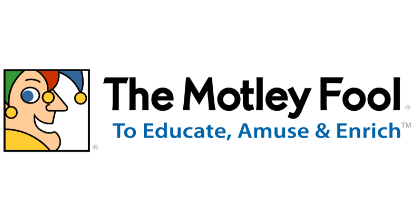
The Motley Fool Now Offering Mutual Funds
About a decade ago, I first learned about no-load index mutual funds and, after earning money to invest after some time, began my foray into long-term investing with newfound knowledge about making the most of my money through avoiding high management fees.
The best sources for this type of information at the time were the discussion boards on The Motley Fool. I learned a lot from the participants, including some of the Motley Fool staff, about living within my means, online banking, and credit cards. For me, the Motley Fool always represented the most responsible choices for managing personal finances and investments.
Every company has to make money, and I accept that. Perhaps this was part of their offering ten years ago, and perhaps I didn’t notice it because I focused on the discussion boards rather than the official staff-written articles. Eventually I began to see the Motley Fool’s focus on investment newsletters, a fee-based service that provided investors with the latest hot stock tips. The concept of a hot stock newsletter opposed the philosophy espoused on the rest of the website.
I’m not completely surprised that the Motley Fool now offers investments. Motley Fool Funds is an asset management arm of the Motley Fool, and the team offers two actively-managed mutual funds, the Motley Fool Great America Fund (TMFGX) and the Motley Fool Independence Fund (FOOLX).
The Motley Fool Great America Fund invests in small and mid-cap companies, avoiding the S&P 500. This fund carries a gross expense ratio of 2.30%, though part of that fee is currently subsidized by the fund, resulting in a 1.35% expense ratio. The 1.35% rate isn’t bad for a managed fund, but the subsidy could end as early as February 28, 2011. Even if the subsidy never expires, it’s going to be difficult to justify these fees.
The Motley Fool Independence Fund focuses on non-US companies. After the management expense subsidy, the fees add up to 1.45%, and will return to 2.26% when the subsidy expires.
Both funds have a minimum investment requirement of $3,000 and an early redemption fee of 2% if you sell the investment within 90 days of the purchase date. If you’re interested in either of these funds, you can purchase them through a number of brokerages such as Vanguard or directly from Motley Fool Funds.
I plan on sticking with my low-cost index mutual funds for now. I have no problem with paying fees if the value I receive is beyond what is offered by the least expensive options, but when it comes to mutual funds, the data show that actively managed funds don’t beat the index over the time horizon I’m interested in, and investing with a short time horizon could pay off, but it’s too risky.


Article comments
Ouch. Those are some expensive funds with absolutely no track record to back it up. I wouldn’t go near those until the fees are (significantly) lower and/or they’ve developed a track record to justify such high expenses. Even these do well over time, it is still hard to imagine them doing well enough to justify such a high cost.
@eric…..
I wouldn’t touch these funds with a ’12b-1′ ft pole……LoL
(that might be what you had in mind….)
😀
Wow. Just Wow lol
Its going to be very hard for these new funds to justify such high fees without a track record of stellar returns.
The Motley Fool has always provided decent advice, but I don’t know how well they can beat the market over time!
Yeeeeah…unless they can prove that the fees are worthwhile, I wouldn’t touch these funds with a 12-foot pole.
Hmmm interesting business move. If those funds go -30% in a year would someone still have faith in the investment articles the Fool produces?